The situation in Group A of the UEFA Champions League was almost completely settled before the last round of the group phase, but Liverpool and Napoli had not much to play for in the Tuesday night fixture. Although the home team needed a three-goal win if they wanted to enter the knockout phase as the first-seeded team from their table, they didn’t shy away from the challenge and went for all or nothing in a duel packed with different approaches and witty tactics.
This tactical analysis will show you how Liverpool closed down the main ball progression paths for their rivals and forced them to go away from their most successful ideas. Also, we’ll take a look at how the hosts utilised a hybrid offensive shape that they haven’t used that commonly during this season, and what were the key players for making their system work in this win.
Lineups
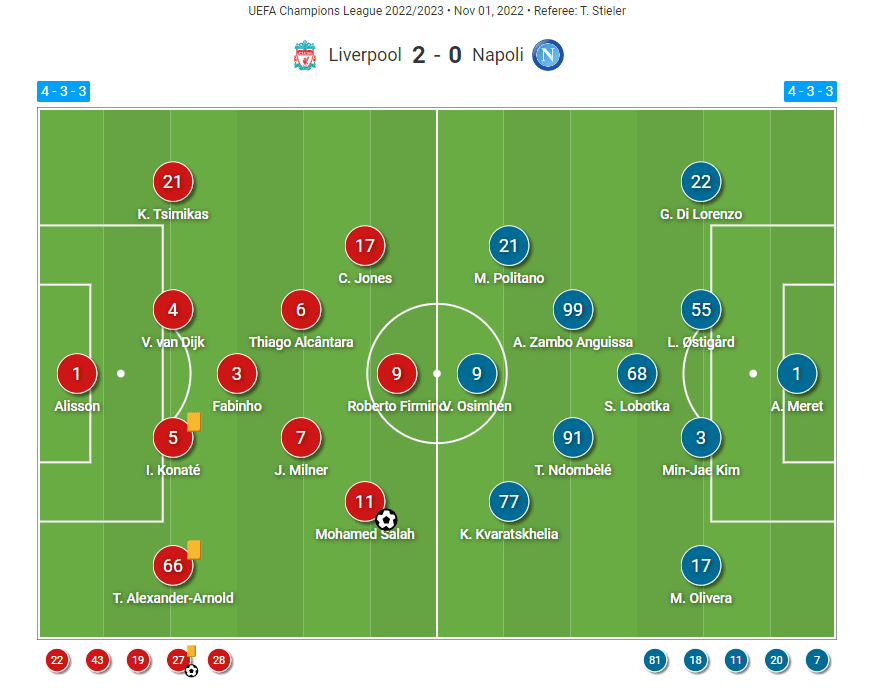
Jürgen Klopp went into the game with a hybrid 4-3-3 that changed shapes during different phases of the game. Allison was between the sticks, and Ibrahima Konaté was paired with Virgil van Dijk in the middle of the defence, with Konstantinos Tsimikas and Trent Alexander-Arnold operating from wide positions.
The midfield was filled in with Thiago, Fabinho and team-captain James Milner, but also with Roberto Firmino and Curtis Jones, who nominally played as a striker and as a winger, but they were constantly switching between their initial roles and the midfield ones. The one certain wide attacker was Mohamed Salah, who was the main threat to Napoli’s goal.
Luciano Spaletti also set his team into an expected 4-3-3 formation with Leo Skiri Østigård and Kim Min-jae as the two players in front of Alex Meret. The full-back positions were reserved for Giovanni di Lorenzo and Mathías Olivera. Stanislav Lobotka was the spider in the web, playing as the main playmaker from the holding midfielder position, and the closest support to him was provided by André-Frank Zambo Anguissa and Tanguy Ndombele. Waiting for isolations down both flanks there were Kvicha Kvaratskhelia and Matteo Politano, whilst Victor Osimhen was the lone striker.
Nullifying of Lobotka
The Italian team plays a really intensive possession-oriented football, that is – by the word of their coach – very role-dependent and not position-determined. On the other hand, the main role in their system is most usually reserved for Stanislav Lobotka, who is the first player in front of the back four, acting as the man sitting on top of the initial triangle/rhombus that will make the progression from the first zone possible.
Establishing the importance of the Slovakian, Klopp made it very clear that their first goal is to cancel the passing lanes towards him and make space for his manoeuvre extremely tight. That made it quite difficult for Napoli to develop their possession fluency as their key link was almost completely shut off. Liverpool’s goal was to ‘cage’ Lobotka and always put no less than three players around him so that the space for his use would become very small.
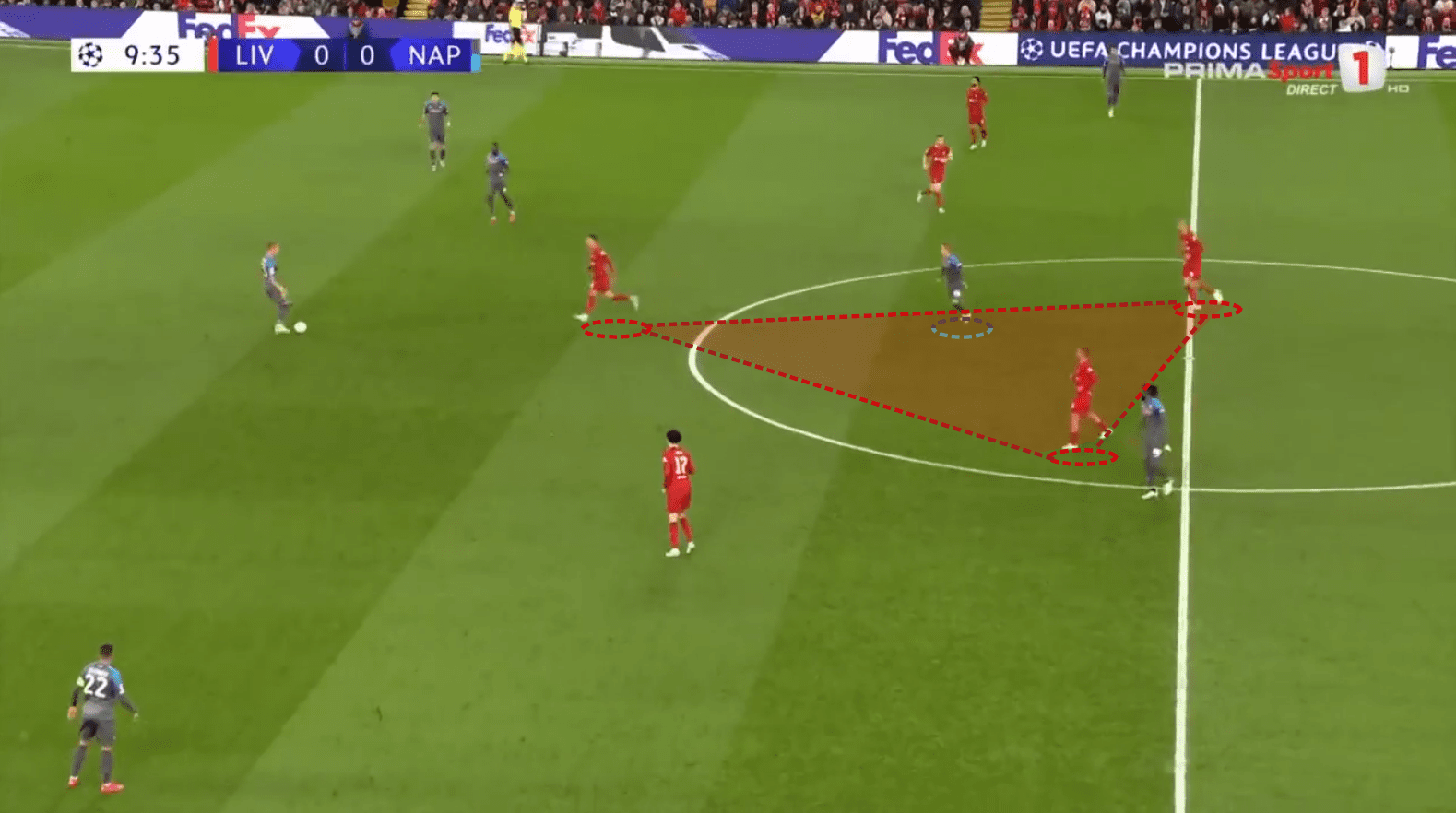
Even when the 27-year-old got the ball in these tight gaps, the Reds were instructed to foul him as soon as possible so that Napoli couldn’t progress which resulted in Lobotka spending a lot of time on the grass. This way, Lobotka’s impact was restricted and Napoli was forced to come up with some different solutions and pursue different passing paths.
Liverpool’s block was centrally-oriented as their main focus was to close the midfield progression. That left the low flank positions open for passing, but the intensity of first man’s pressing commonly bottled possession for Napoli as they weren’t comfortable playing these passes under well-timed pressure Firmino was most commonly emitting.
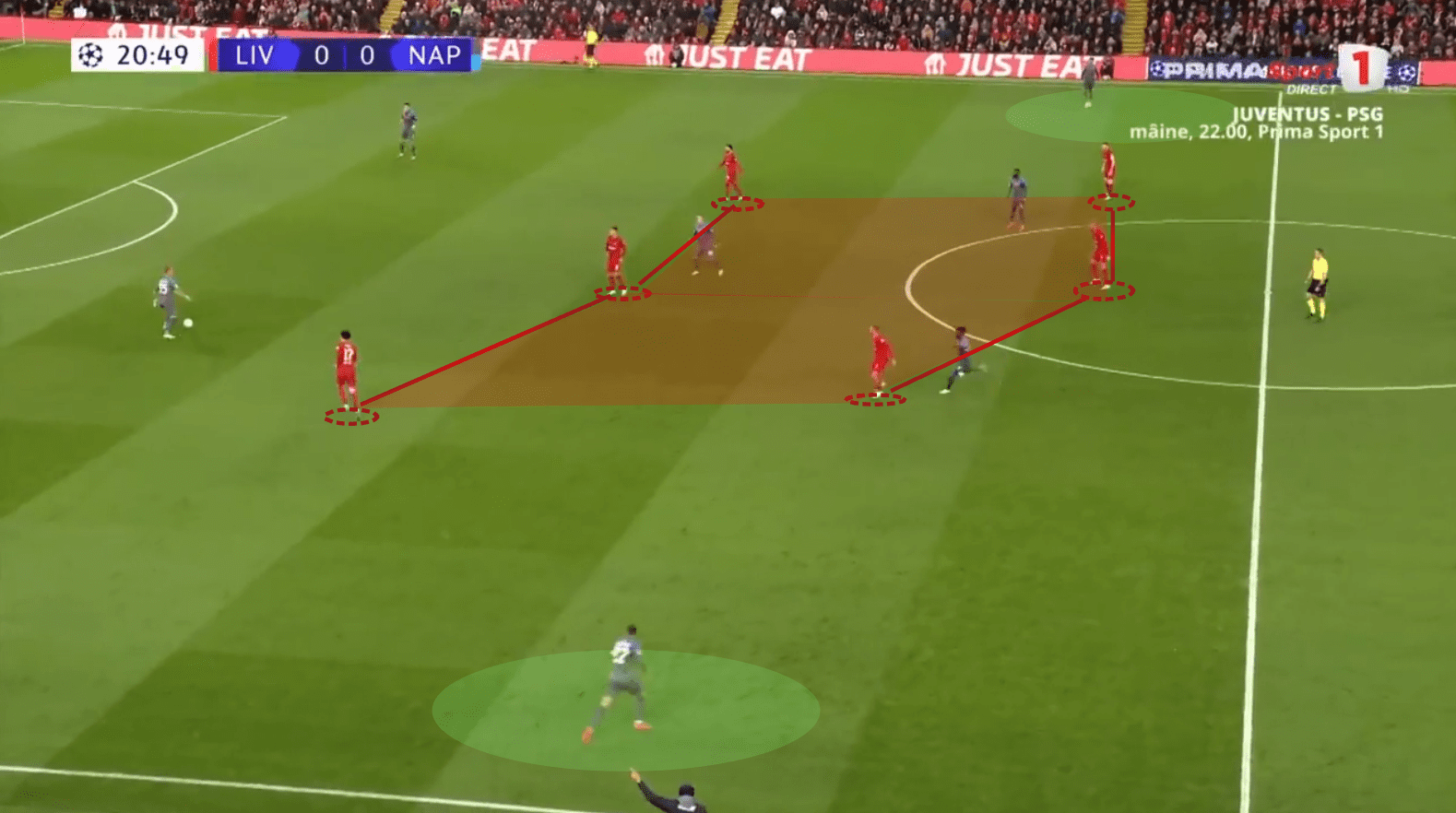
Liverpool had the time to switch to the flanks once the ball was played there and their organised structure kept its shape no matter where the pressing was happening. Also, the mentioned intensity of pressure that was put on the ball carrier impacted the quality of the sent balls.
There were situations where Klopp’s team didn’t do their pressing job very nicely and that left Lobotka free to conduct his team’s actions and deliver them with their Plan A.
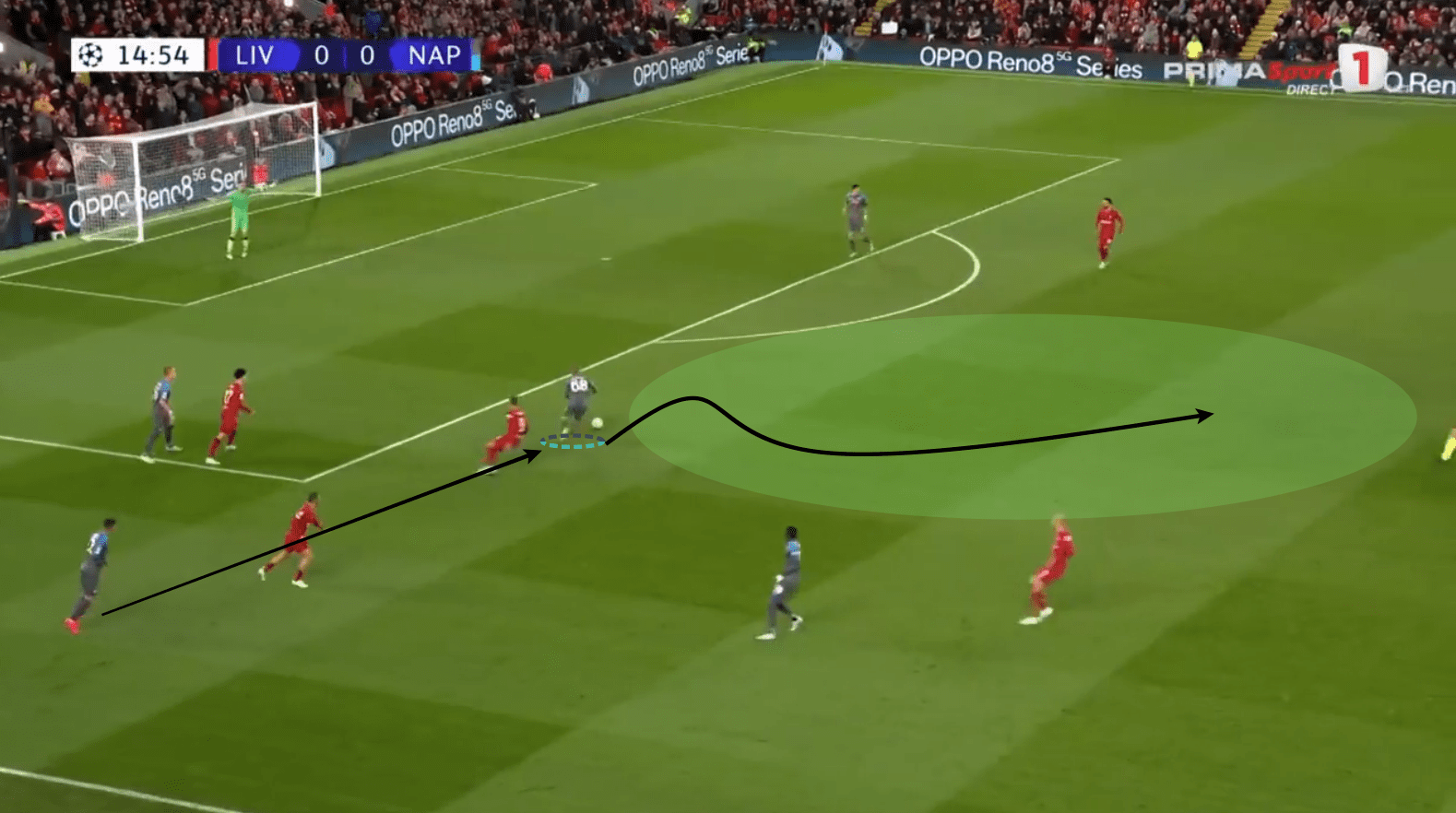
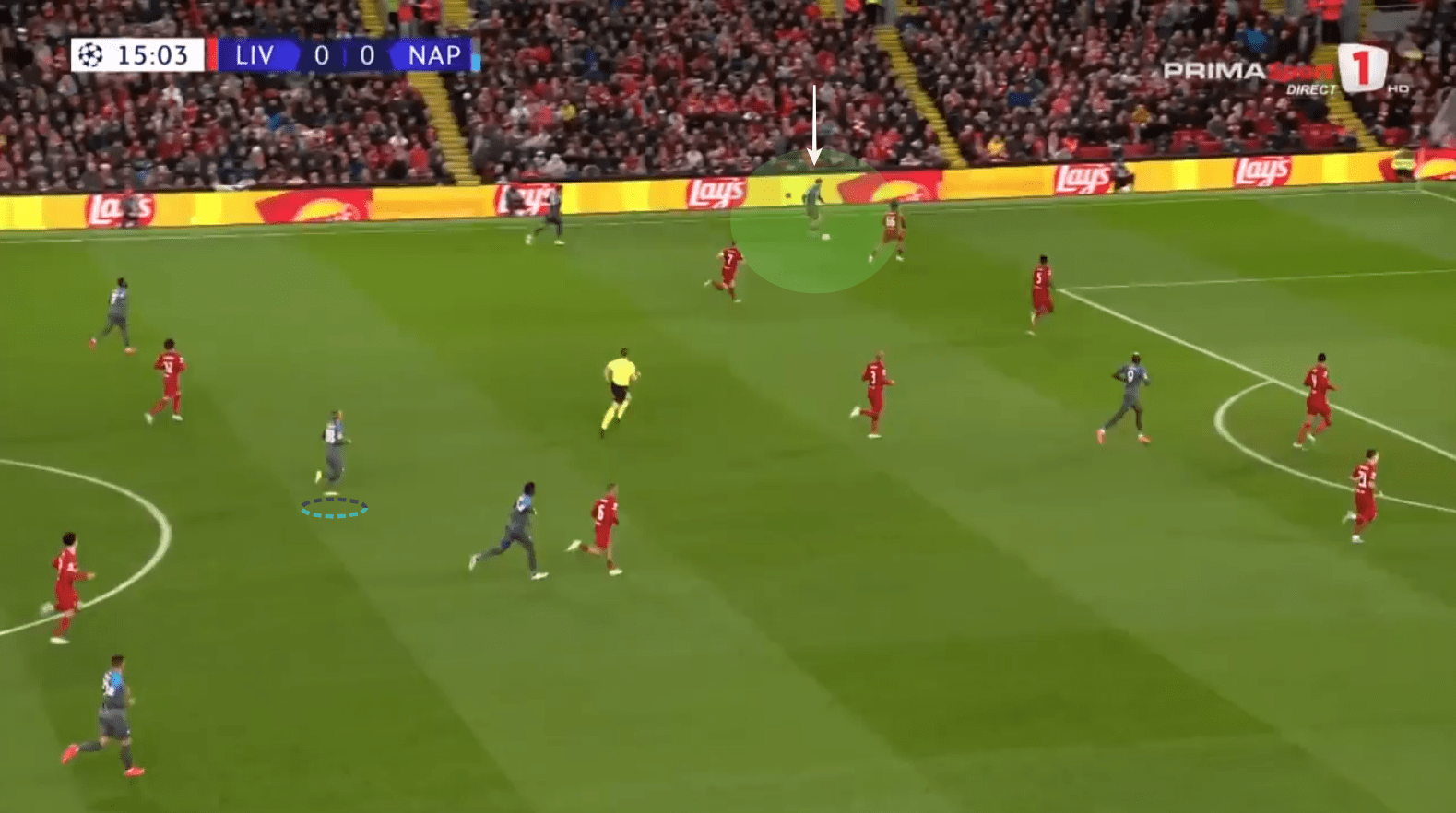
Luckily for Liverpool, they managed to keep the attention on Lobotka more or less constantly so the said situations haven’t happened that frequently. The fact that they forced Napoli out of their comfort zone by closing down the main progressor of their team was the key for them to neutralise their opponents.
The attacking midfielders’ role in Liverpool’s setup
As it is formerly mentioned, Klopp engaged in a hybrid offensive setup for this game, having Jones play on the left flank, but keeping the Englishman’s role very complex and fluent during the time he spent on the pitch. To put things in context, the 22-years-old was important for the Reds both because of his flank positioning and because of his inverting into the half-space.
First things first, Napoli went into the game with the intention to press very high in a man-marking manner. They tried to force the opposition to stay in possession for shorter amounts of time in order for them to have total control of the possession during the game.
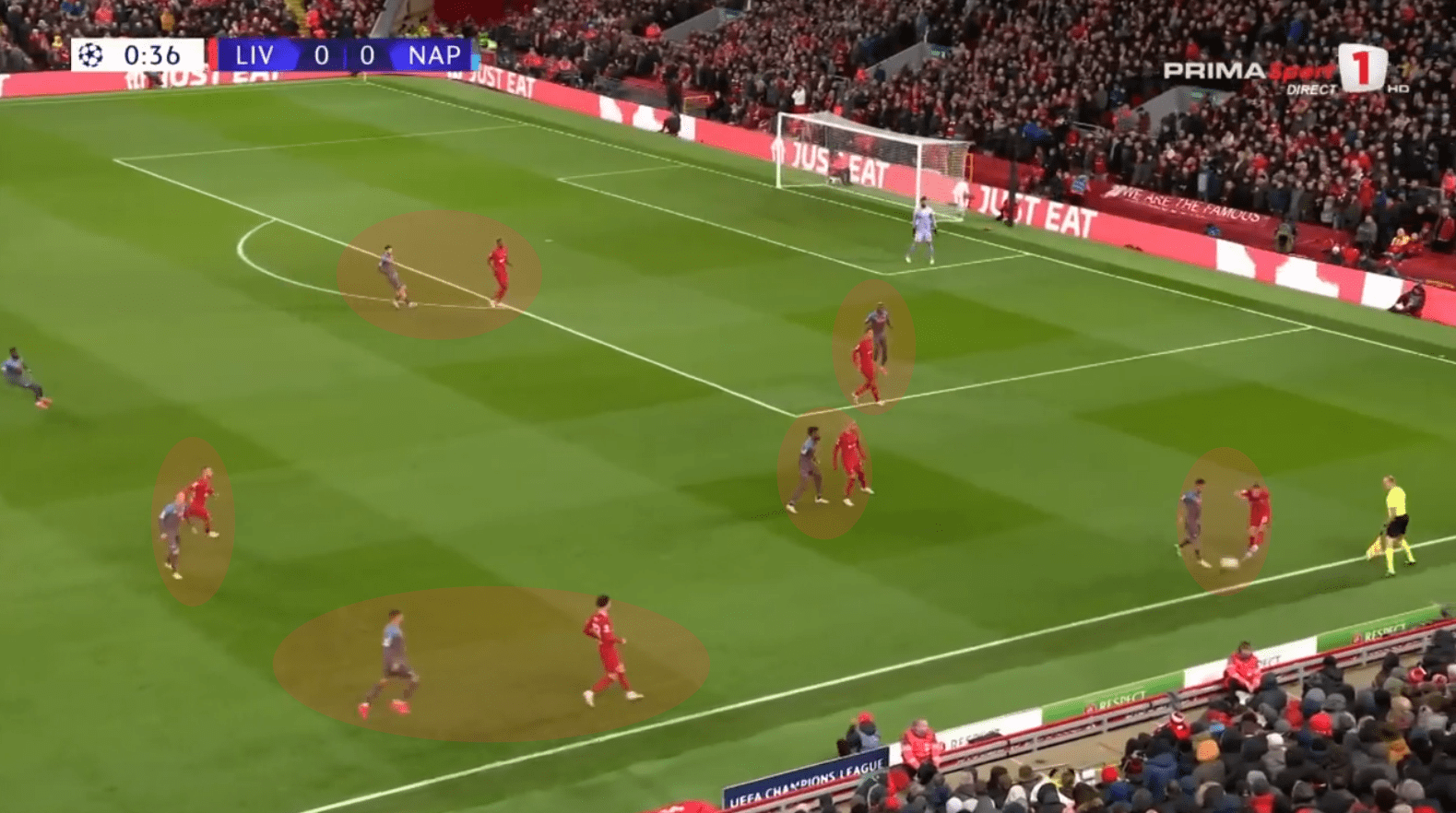
Napoli’s consistency in this approach wasn’t top-notch and we could quickly see flaws in their pressing game. They pressed with intensity and number in central and inner corridors but left the flanks wide open and that made it easy for Liverpool to play around the pressing and find an open man next to the byline – especially on the left-hand side.
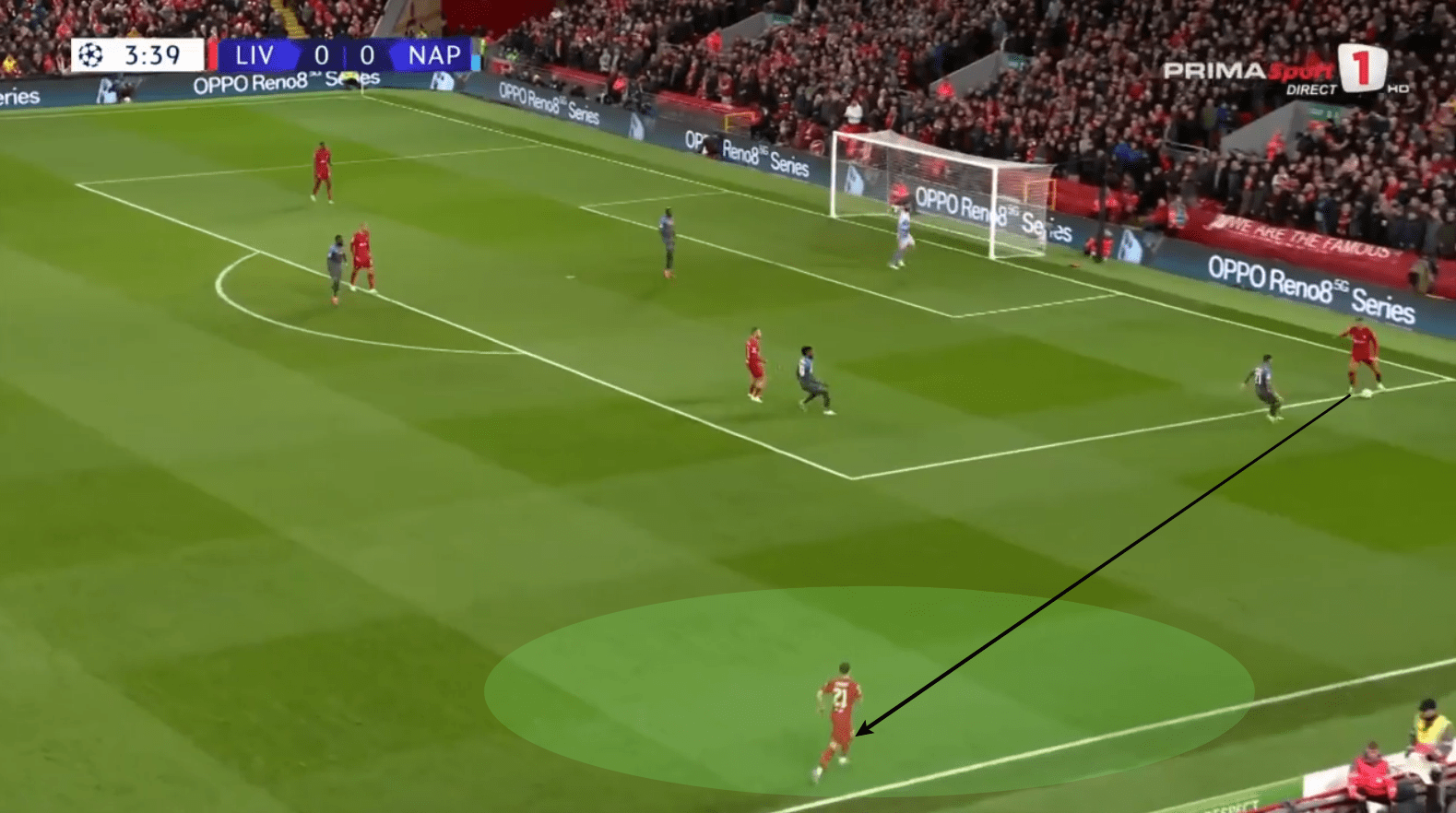
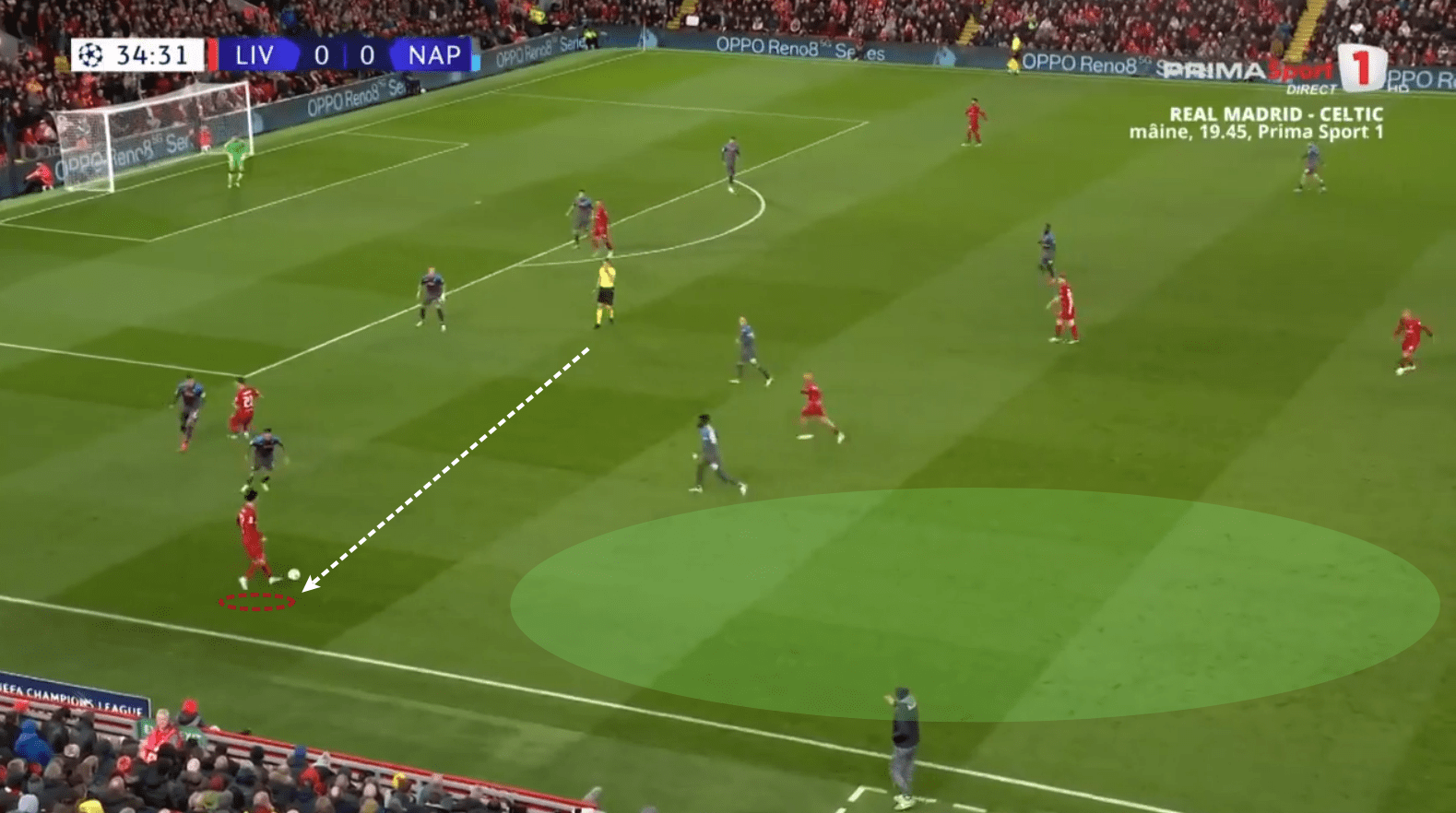
In the pictures above we can see two different moments of the game that complete one whole idea of Liverpool’s team. The high and wide positioning of Jones made it possible for Tsimikas to break open in lower zones of the pitch as it highly affected the opponents’ vertical compactness.
He pulled himself to the flanks time and again in order to 1. provide his team with a vertical passing option down the outer corridor and 2. stretch the opponents vertically and lure their focus onto him so his teammates could have more space for themselves.
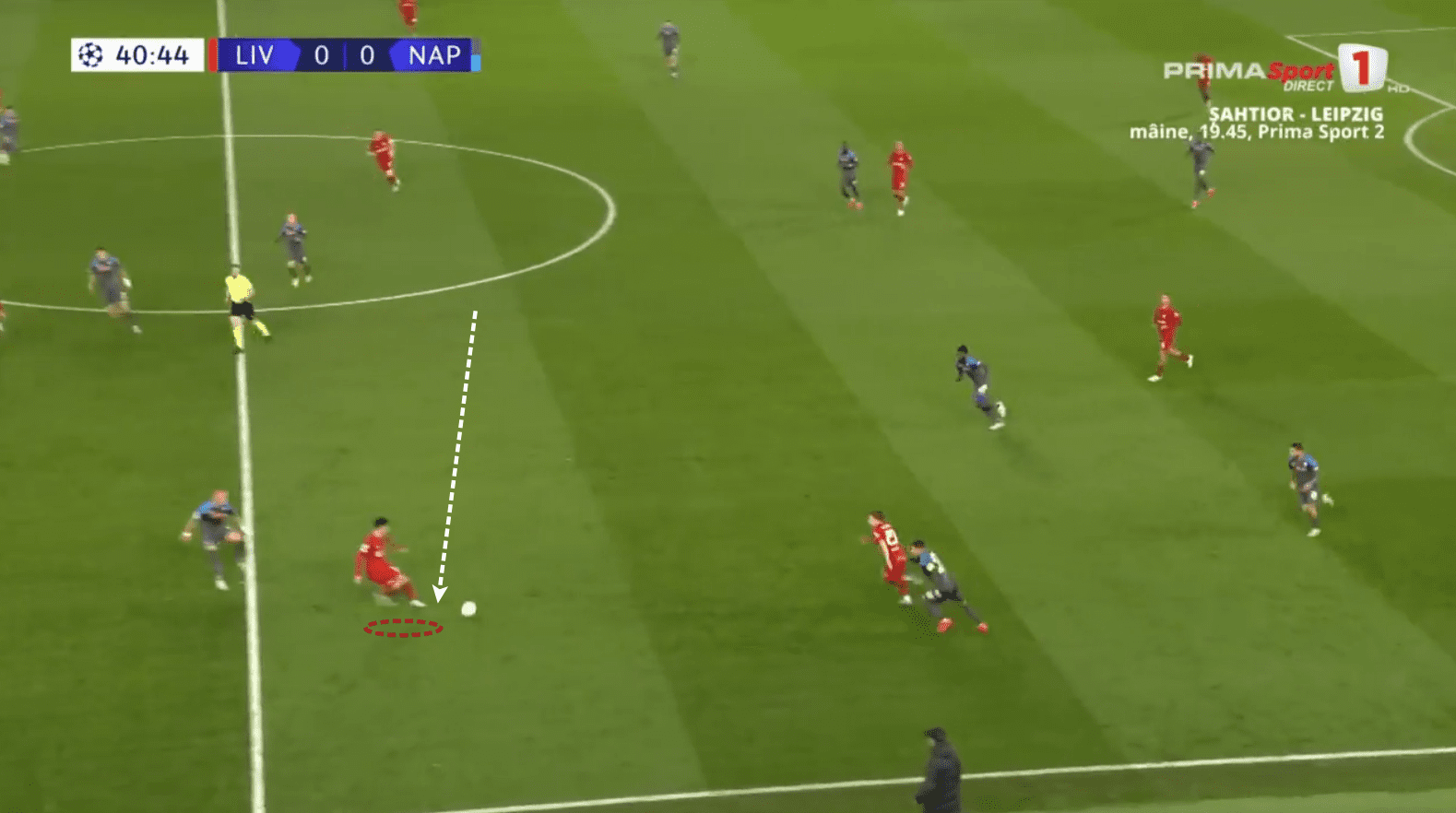
The impact of offensive midfielders for the hosts hasn’t only been limited to what their number 17 was doing, as Milner also played a huge part in allowing fast progression and provided a half-space option for the team. The initial setup of the two was commonly in the half-spaces and their motions depended on Firmino’s roaming – his dropping usually meant for Jones or Milner to empty the inner corridor and go for a run in various different directions.
Also, they provided their team with in-depth runs and numerical superiorities on the flanks which were very lucrative in terms of getting to chance creation. In the pictures below, we can see two examples, one of which clearly shows the initial positioning of the two Englishmen in Liverpool’s midfield and their intention to attack depth through the half-spaces, and the second one portrays their engagement on the flanks in creating numerical superiority.
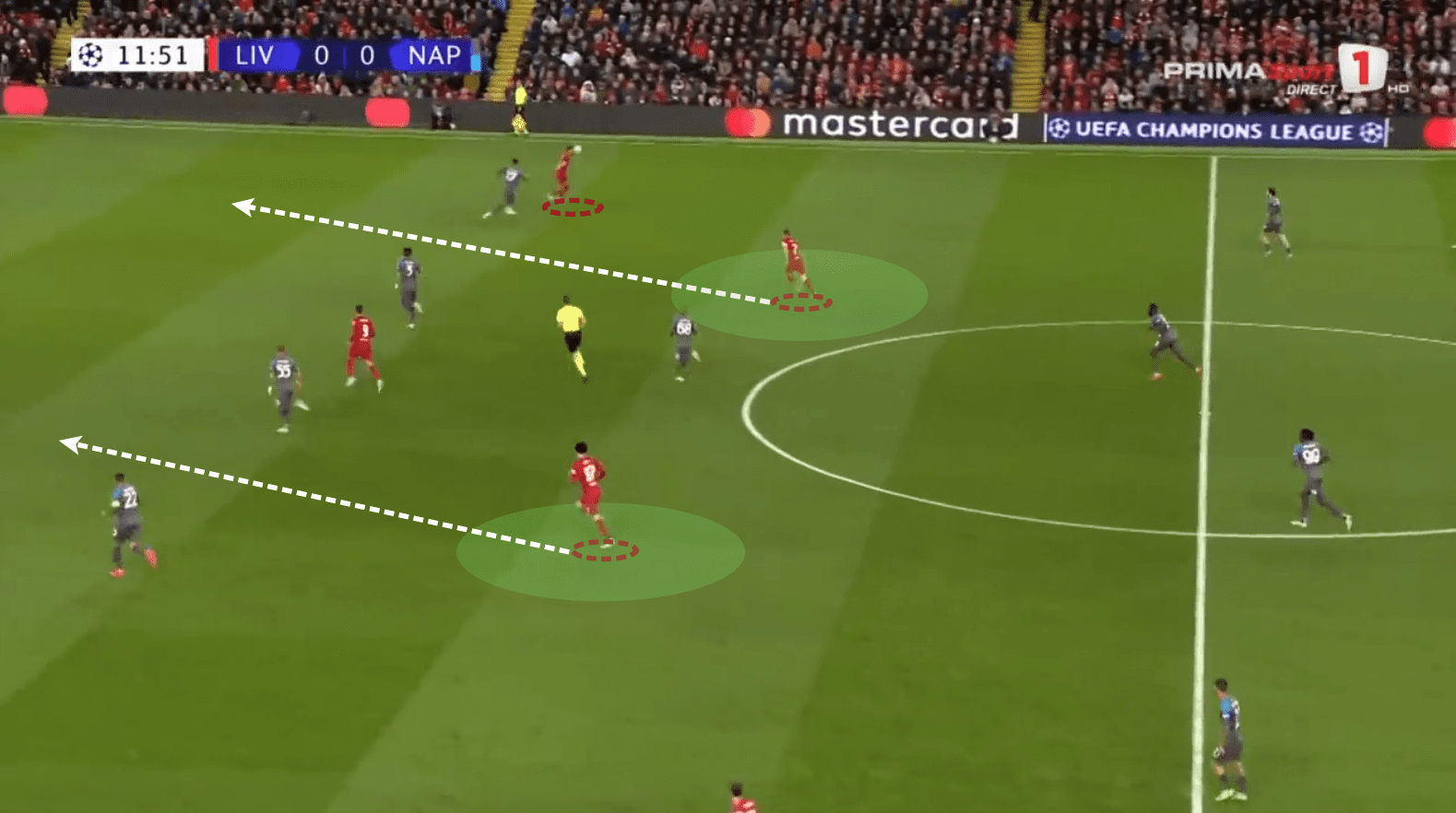
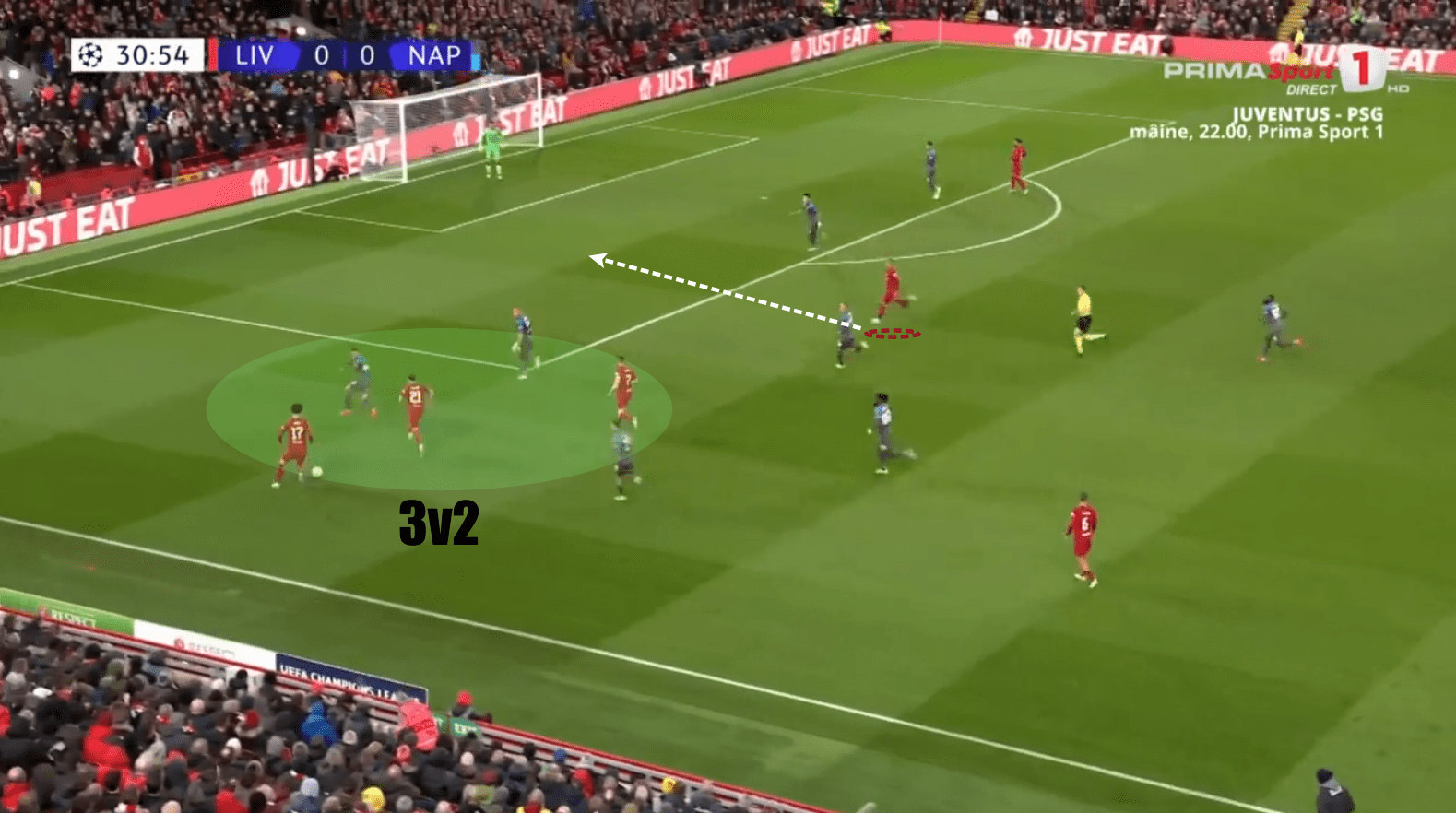
Although Liverpool didn’t directly score out of these settings, they were their main mechanisms for trying to win the game against Spalleti’s men. They brought them into a lot of dangerous positions and set the tone of the game for the biggest part of it.
Napoli’s improvising
Since their main offensive patterns were mostly neutralized, Napoli Needed to go with a plan B solution, which was individually oriented. They wanted to exploit the fact that Liverpool is familiar with pressing high and positioning their defensive line very close to the halfway line, so they openly called them to press in the first third of Napoli’s action, so that the wider space could be open for Osimhen to exploit due to his pace.
The setup was simple – notice the open situation for the Nigerian to benefit from and send the pass towards him as quickly as possible. The goal was for him to win the races against his closest opponents in the large spaces since he has the physical capabilities of doing so.
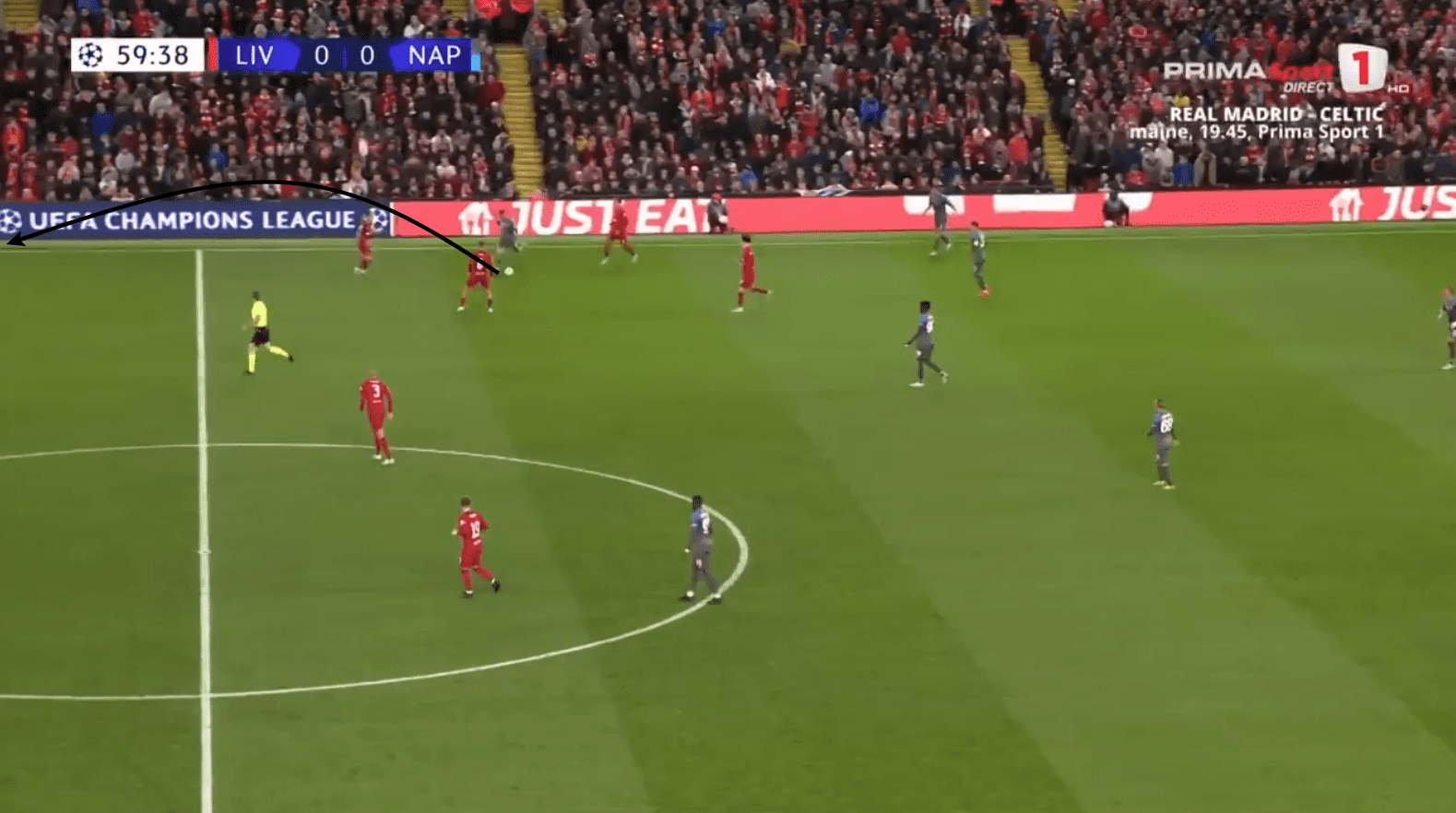
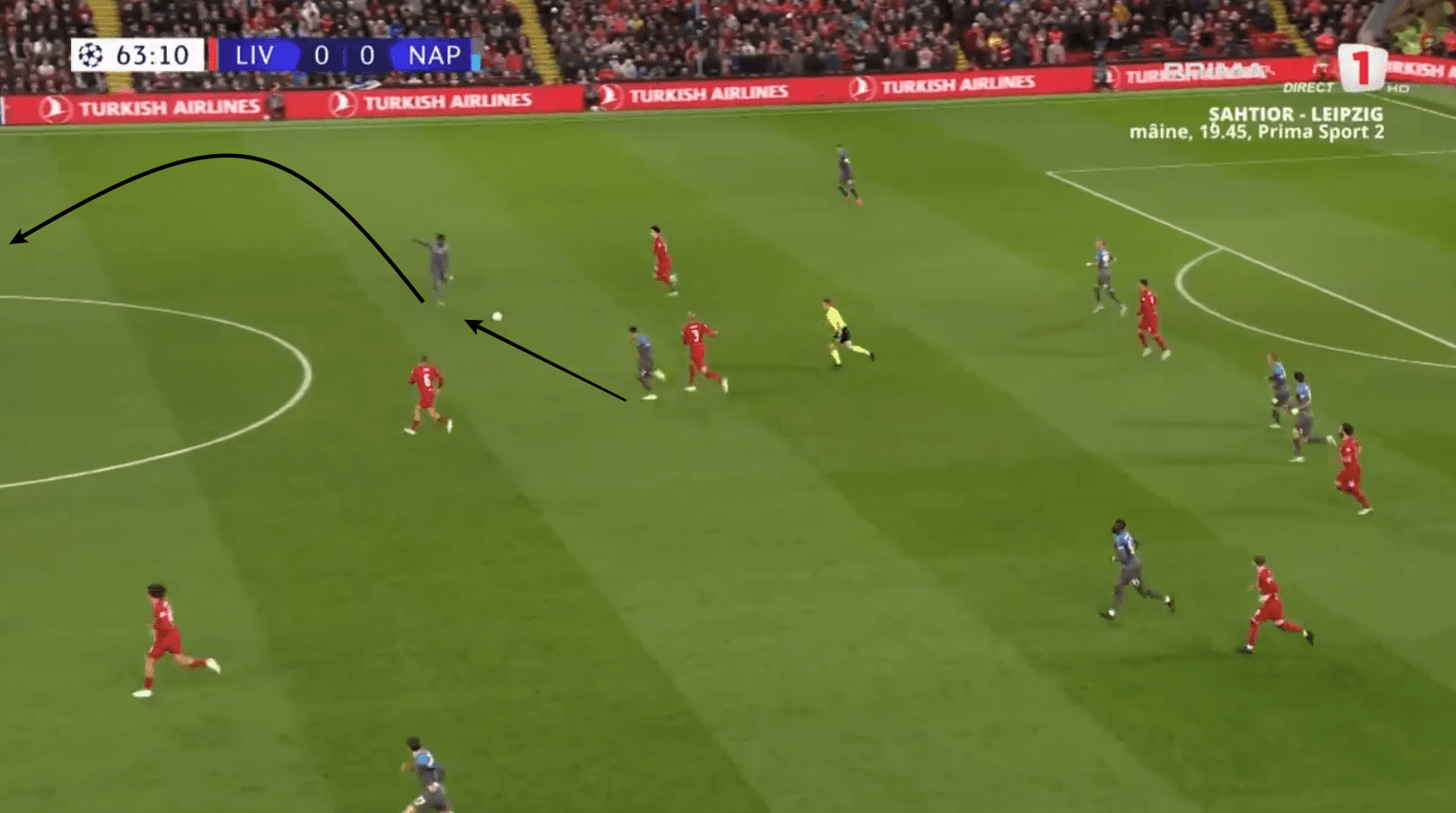
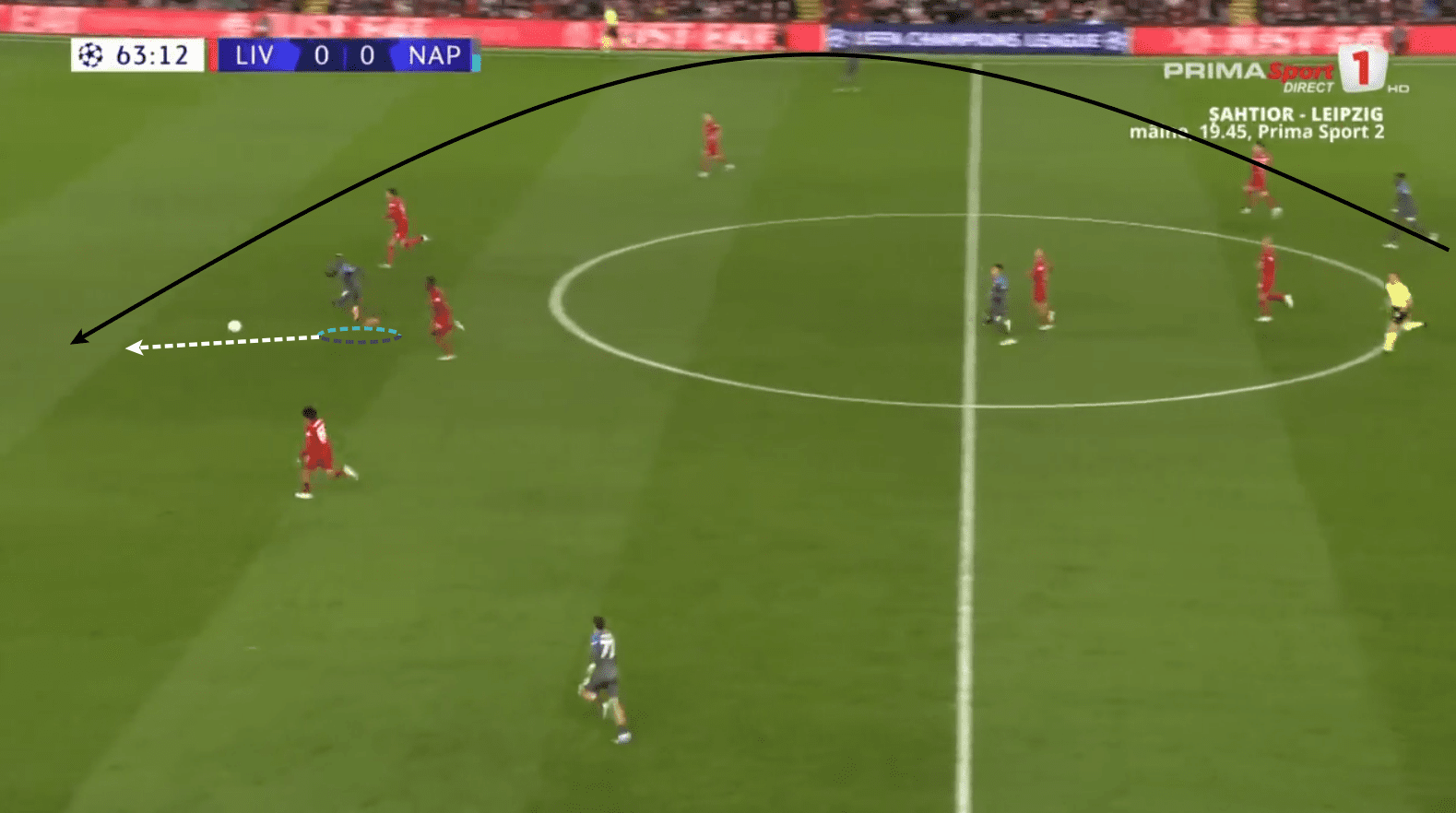
Osimhen was constantly put in these races as it was probably the best solution left for Napoli to try since their central progression was shut down. Anyhow, they didn’t supply him with the needed support so he was left on his own to try and improvise once he secured possession.
On rare occasions, the perimeter around the Nigerian was properly supported, so he got the chance to play the first-touch link-up passes that will open up the main threatening option for them – a quick pass to the flanks where Kvaratskhelia and Politano were waiting for isolations.
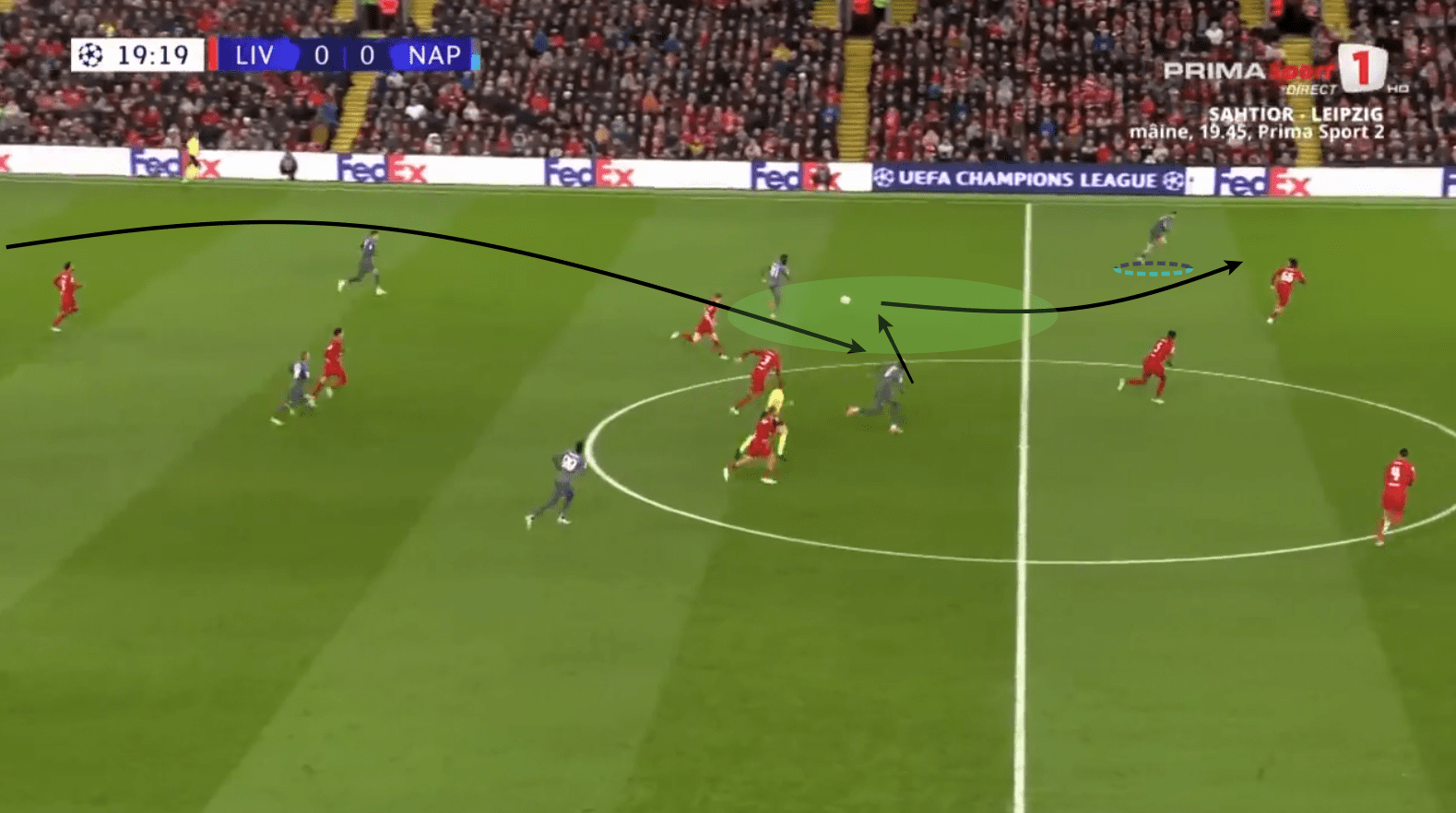
Napoli got themselves into promising situations, but they didn’t have all the manpower they needed so their chance exploitation wasn’t on top level because of the context they created themselves. Also, they had their moments, but the quality of the individual performances of the key attackers in their team was a bit off and that’s why they left England empty-handed.
Conclusion
This tactical analysis has shown how Klopp cleverly neutralized one of the most potent attacking sides in Europe by cancelling their main engine in the midfield, embodied in Stanislav Lobotka. Liverpool’s defensive structure was really compact and properly oriented, which allowed them to force their opponents to give up on their initial tactics and start pursuing alternatives in order to get the best out of the bad situation.
Even though the two-goal win wasn’t enough for the Reds to finish on top of their group, and Napoli ended up victorious when approaching the bigger picture, the home team has delivered a very interesting approach, which suggests that they might be coming back to the right track and that they’ll most certainly be a tough cookie for every opponent in the knockout phase. As they are coming from the second-place spot and are going to play against some of the group winners, we can expect a possible mega-duel right away in the round of 16.





Comments